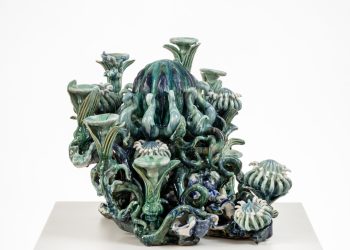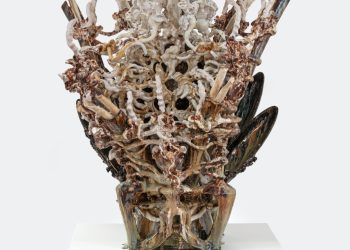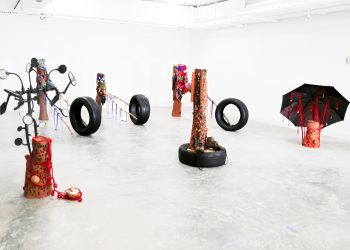Ivan Kanchev: Ceramics for the sighted and the blind, 2000-2017
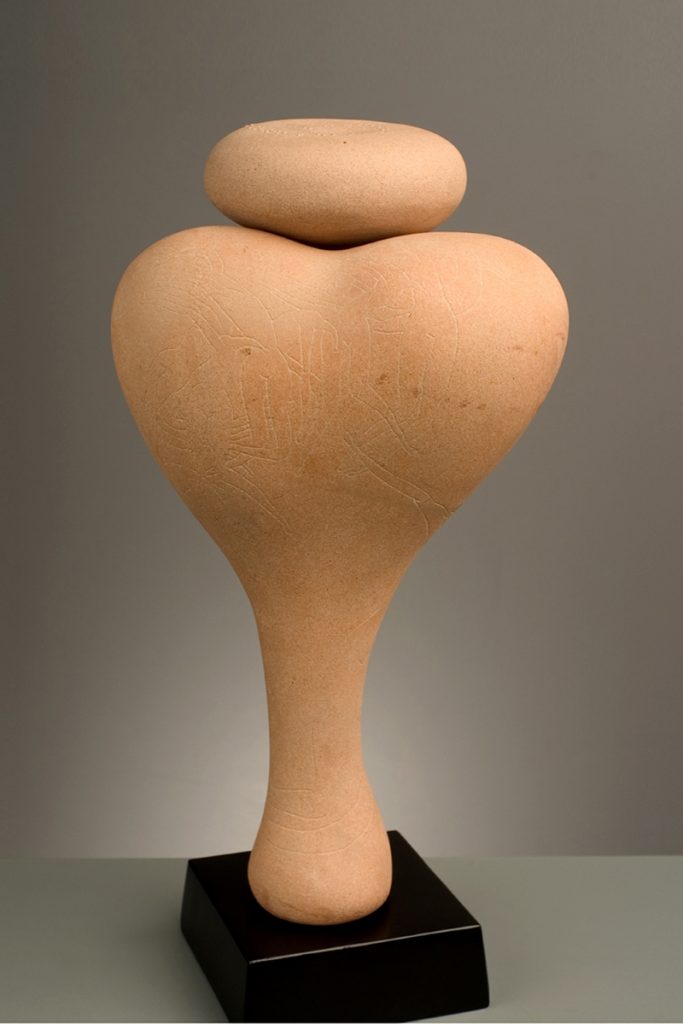
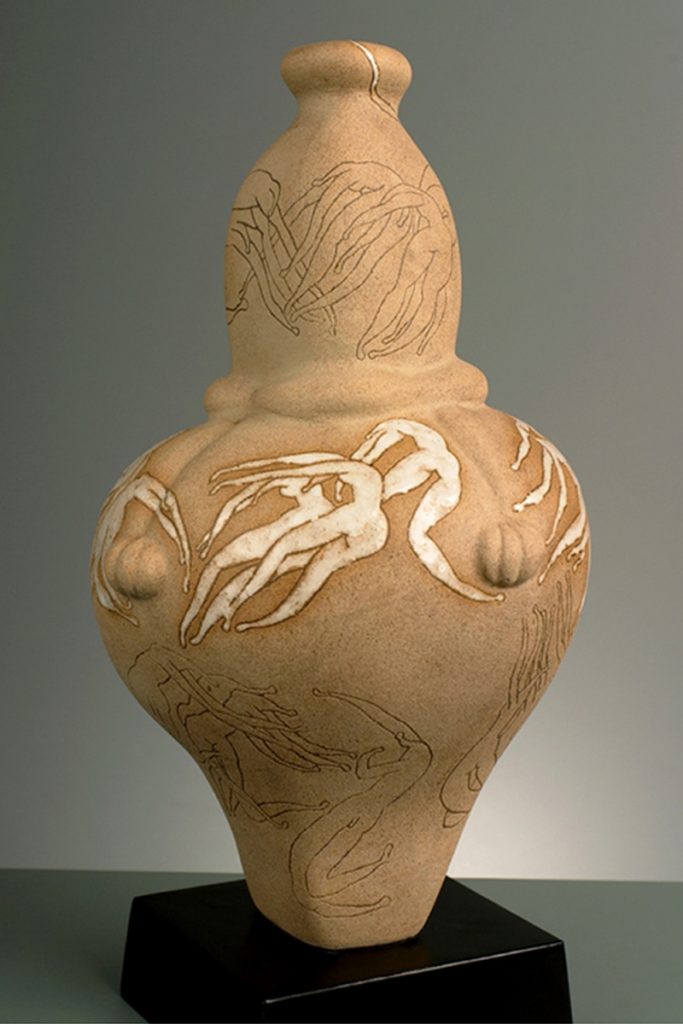
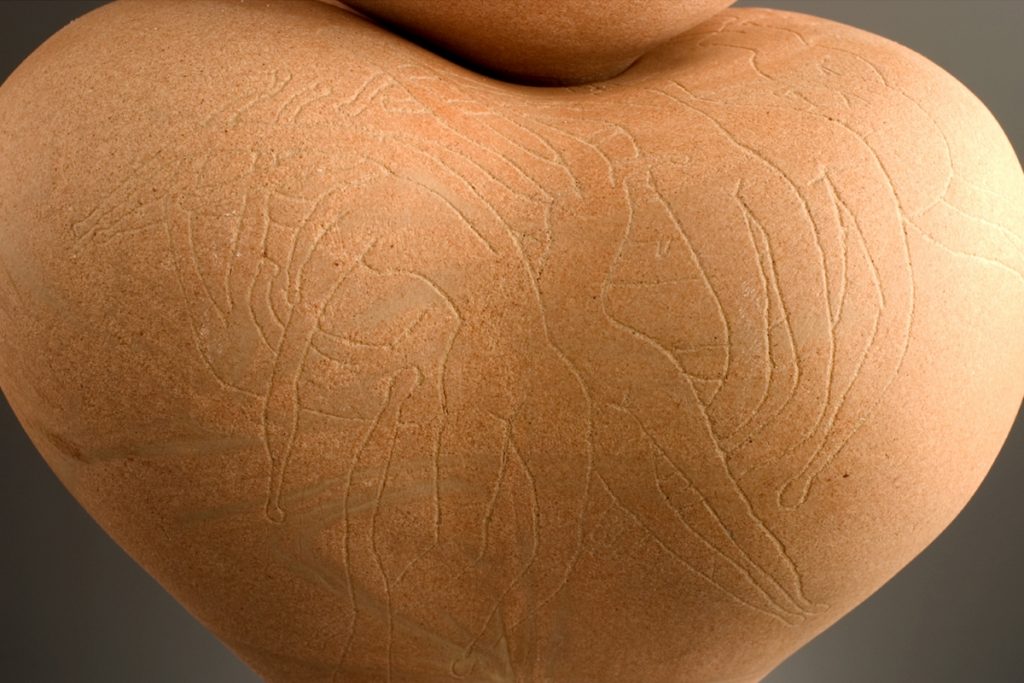
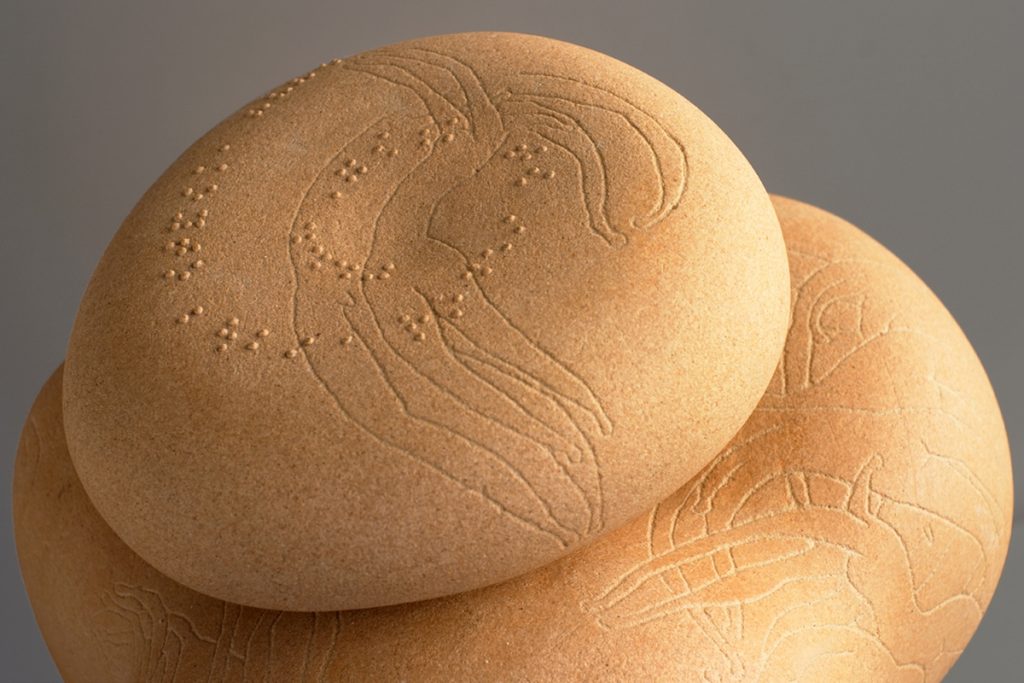
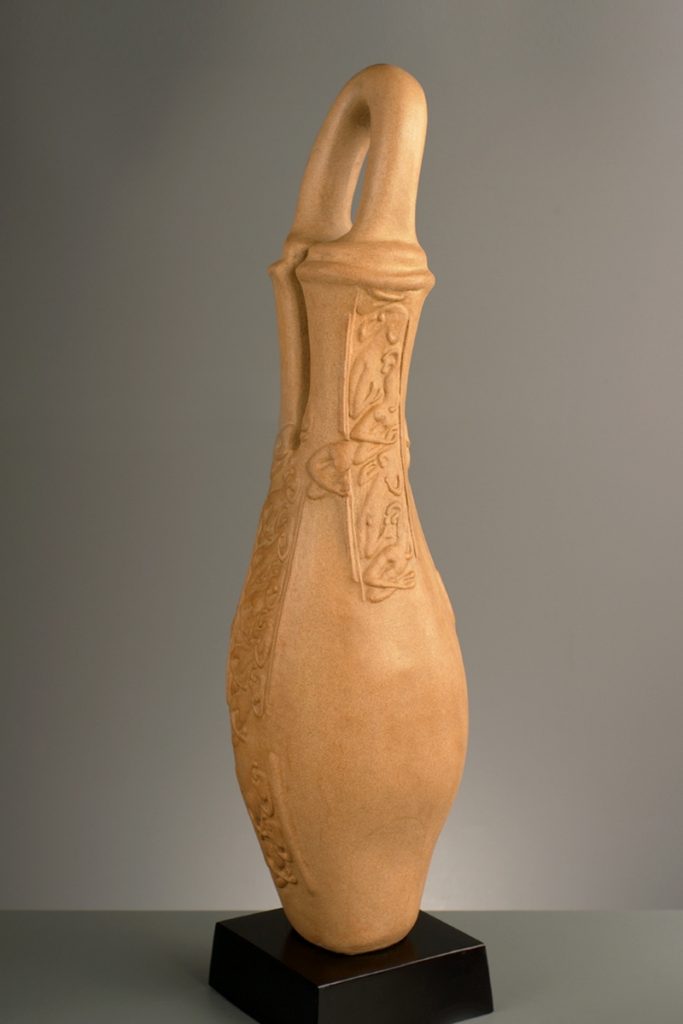
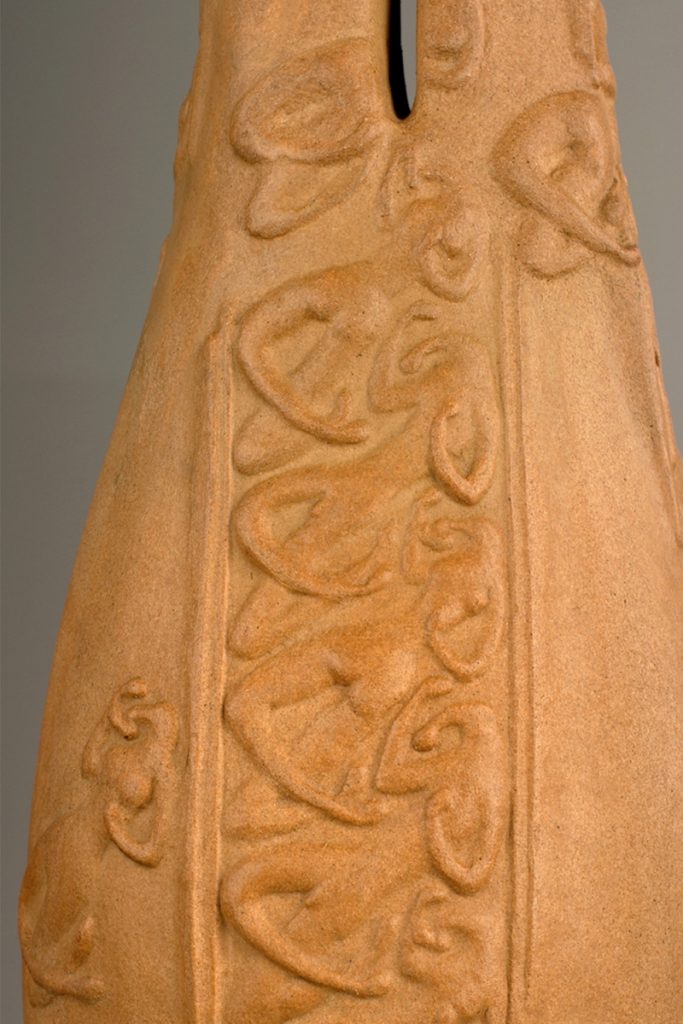
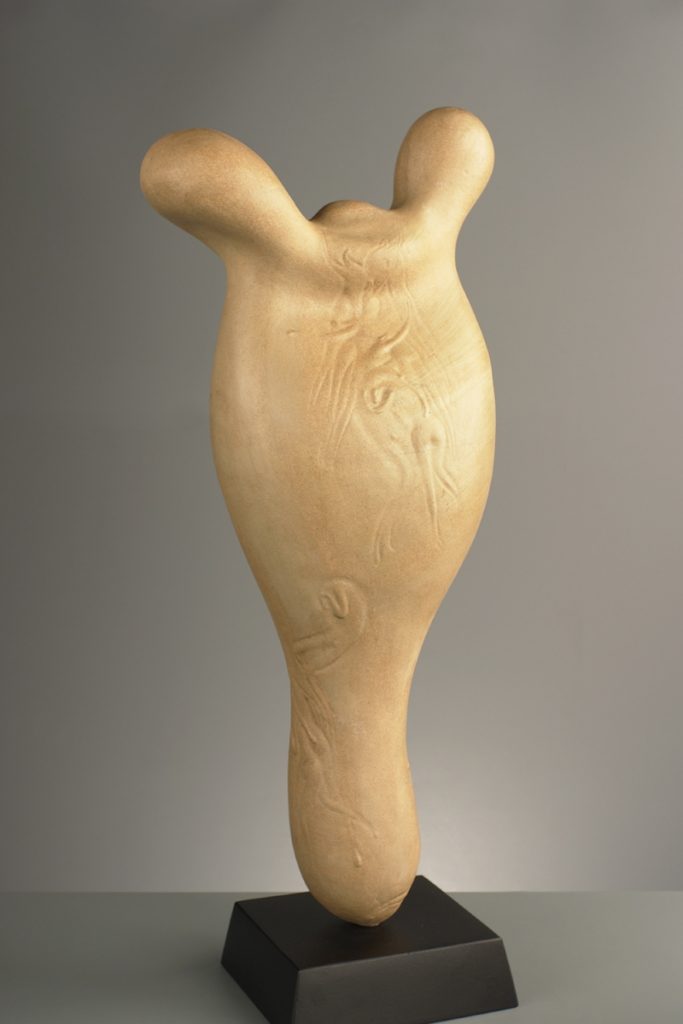
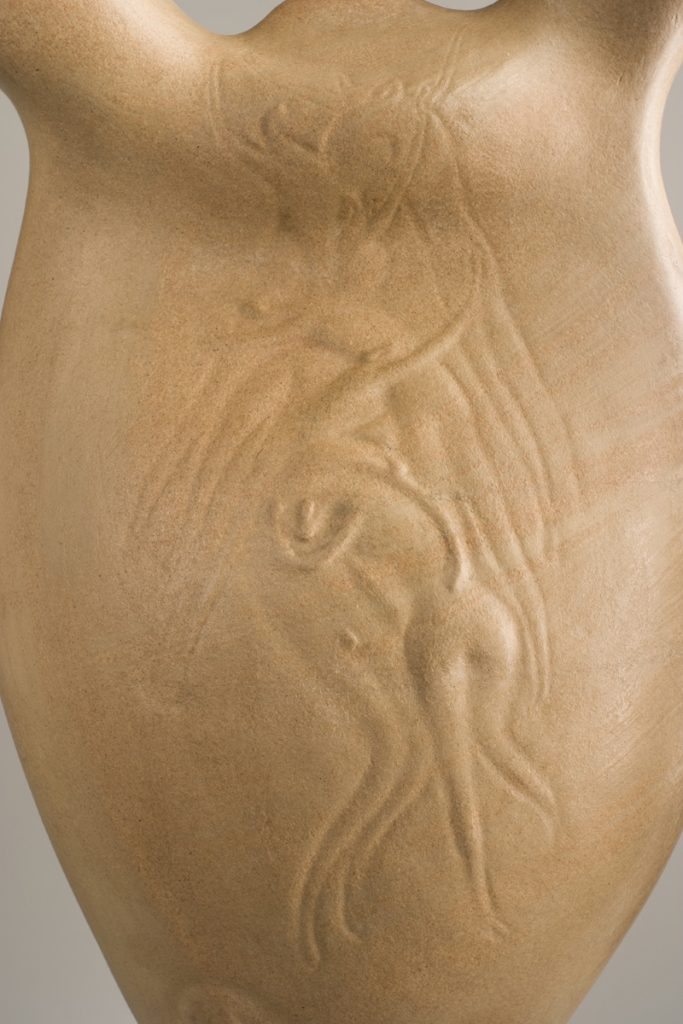
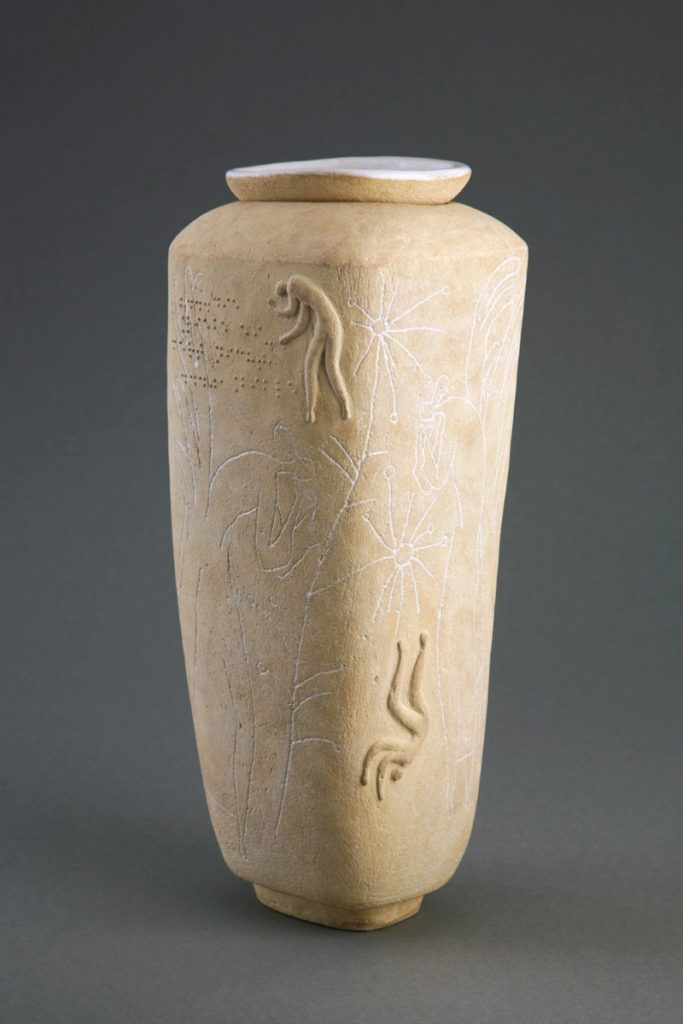
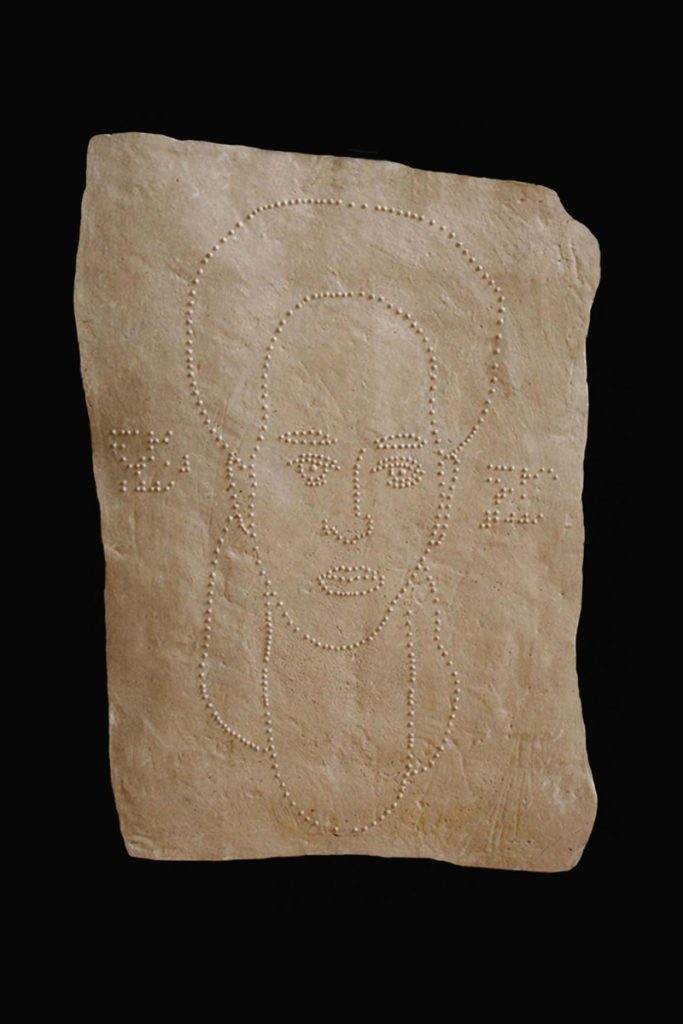
The “Harmony” project presents views of the pottery and the meaning of existence, formed in a period of intense creative and research work in the area of the tangible perception of ceramics. The attention of the observer is directed to the fundamental themes of human existence, and Love is elevated as an eternal principle to achieve harmonious relations between the people, as well as to build a healthy society, where differences are not just endured, but accepted unconditionally.
The easel shapes in the project “Harmony” adhere to established parameters and are distinguished by simplicity, compactness, and roundness. With its delicate silhouette and subtle emotional intensity, they give a sense of beauty and tranquility, of harmony and balance in life. With minimal means of expression, a suggestion for originality and impermanence is achieved. The clean natural forms are enriched with finely scratched drawings, shallow relief and Braille print as a frieze, without hurting the balance of the whole.
One of the Braille texts placed on the plastic most broadly represents the motto of the project and draws in the highest sense the road to achieving unity between people and systems. It is a quote from the ancient Biblical text and it reads as follows: “Love is patient, love is kind. It does not envy, it does not boast, it is not proud. It does not dishonor others, it is not self-seeking, it is not easily angered, and it keeps no record of wrongs. Love does not delight in evil but rejoices with the truth. It always protects, always trusts, always hopes, and always perseveres. Love never fails.” (1 Cor. 13: 4-8).
The creations in the project “Harmony” are designed to be perceived not only visually, but also through touch both by the sighted, and the blind. To provoke the formation of beauty and harmony in the imagination, they are represented by some psychophysiological features that blindness imposes on the individual. For this reason, there are established “criteria for making tactile work and arranging a tactile exhibition “, based on psychological research on the tangible perception of ceramics. See “Tactile ceramics,” 2007, Sofia; “Tactile perception of ceramics (research), 2012, Sofia – Ivan Kanchev.
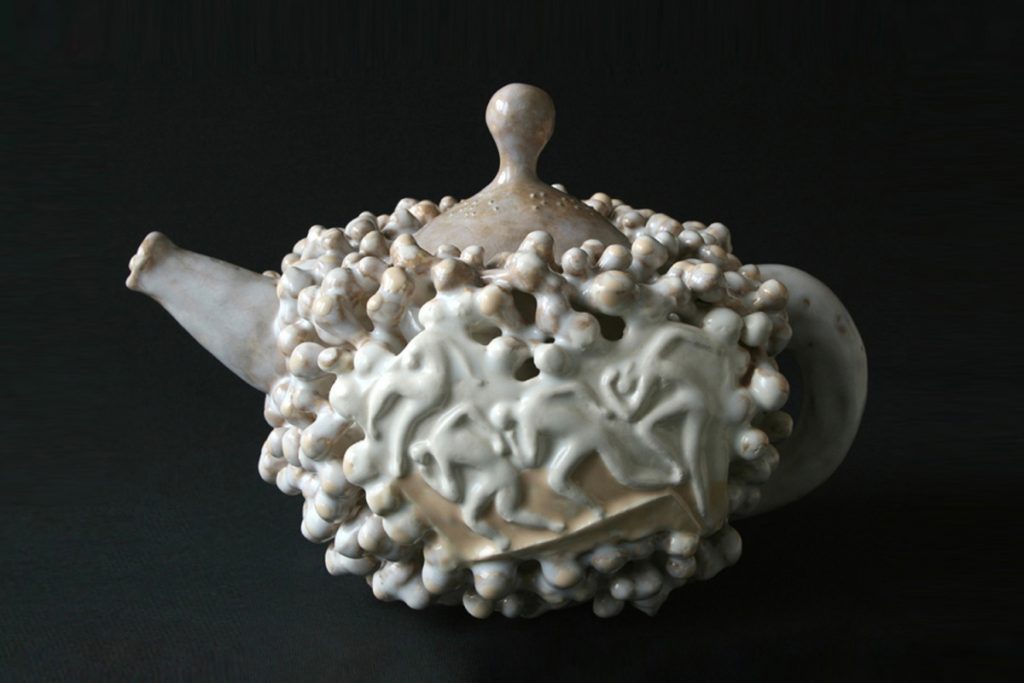
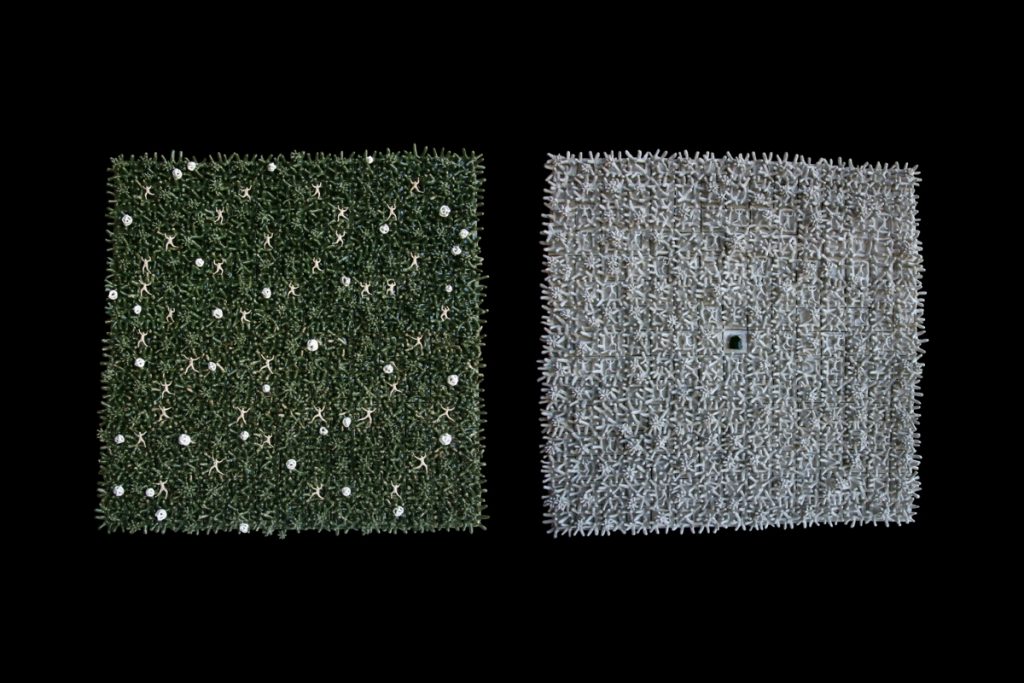
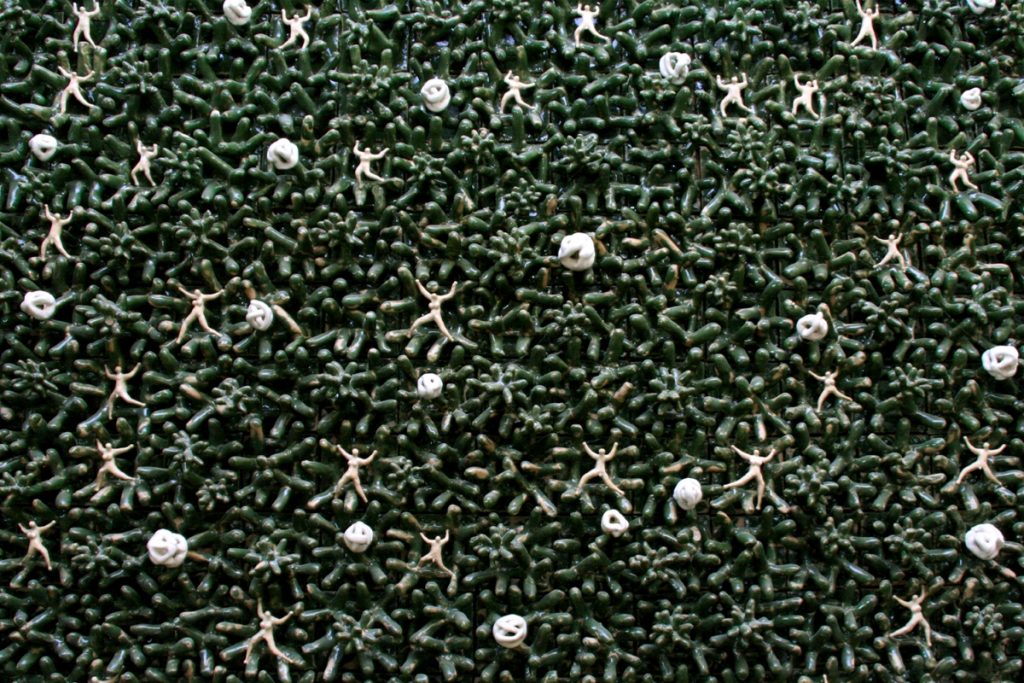
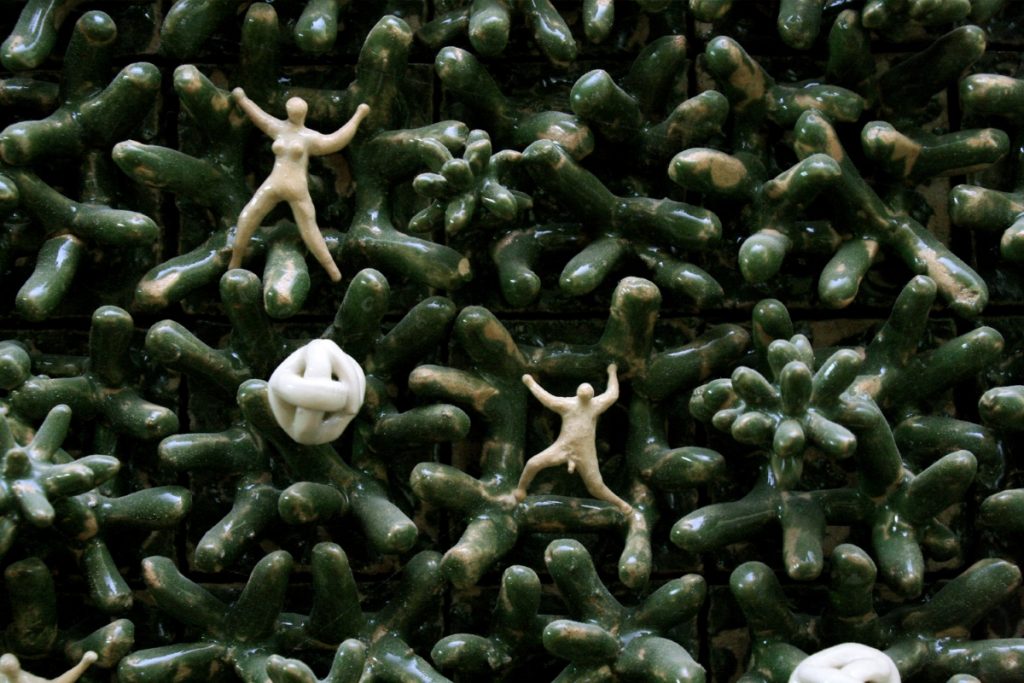
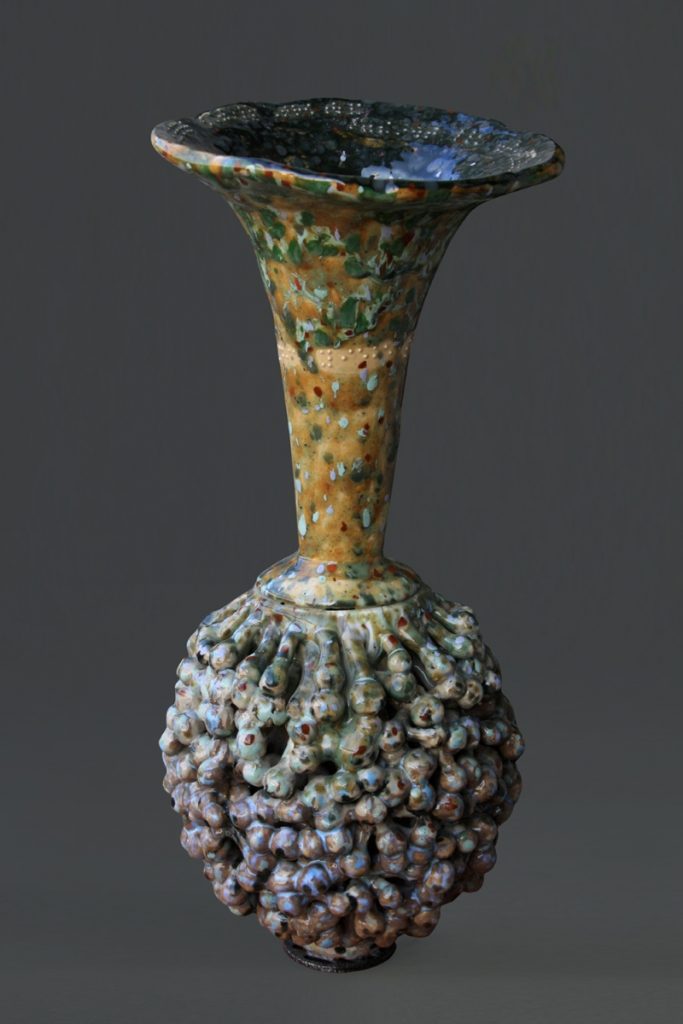
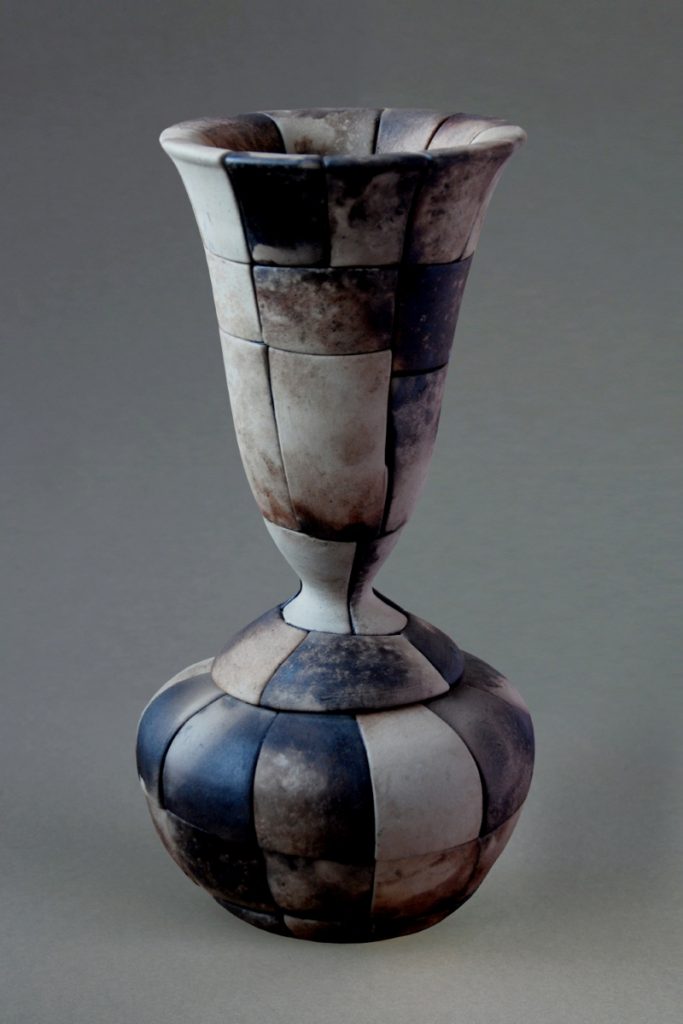
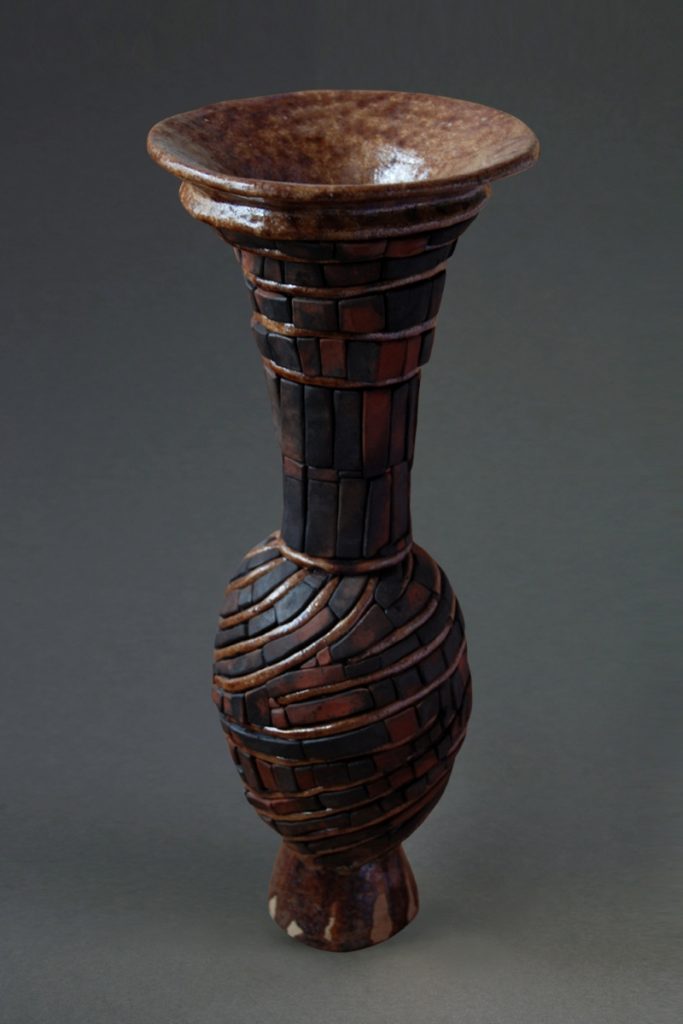
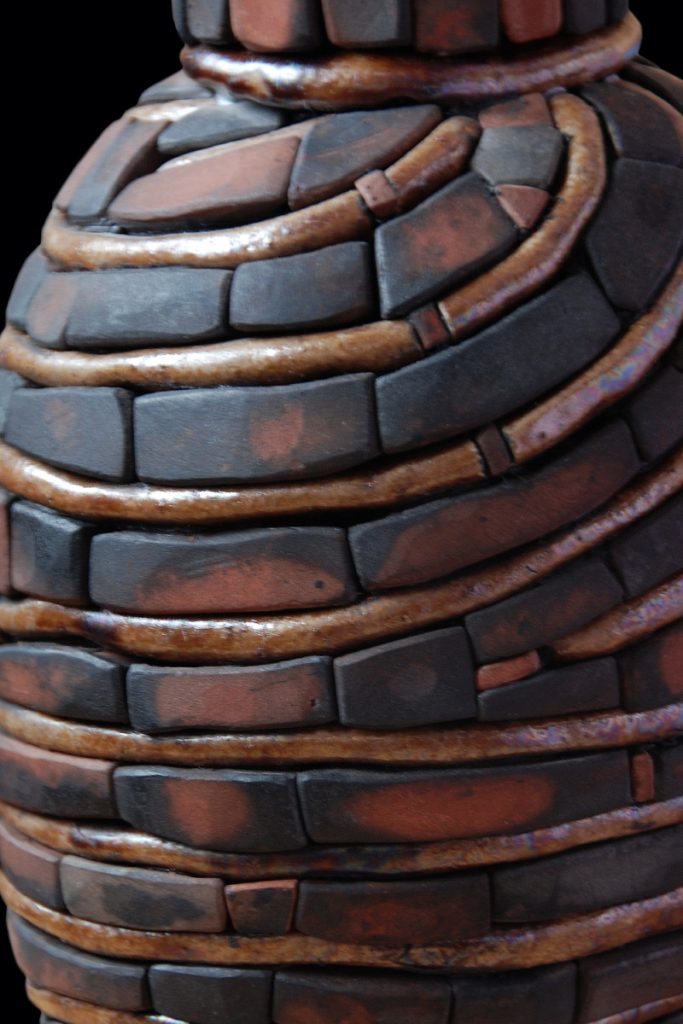
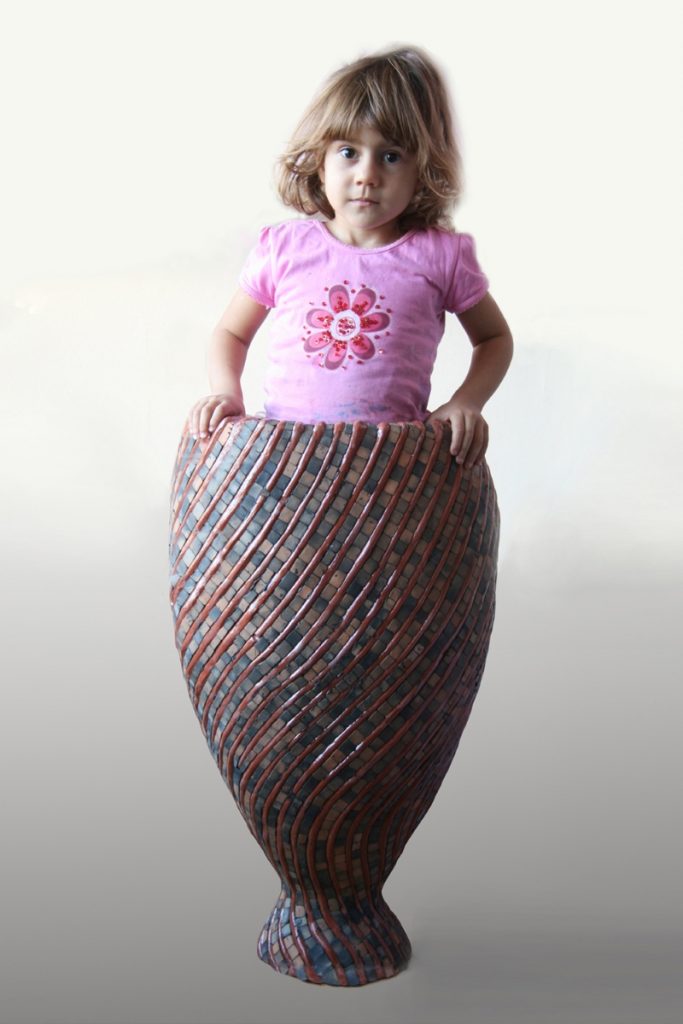
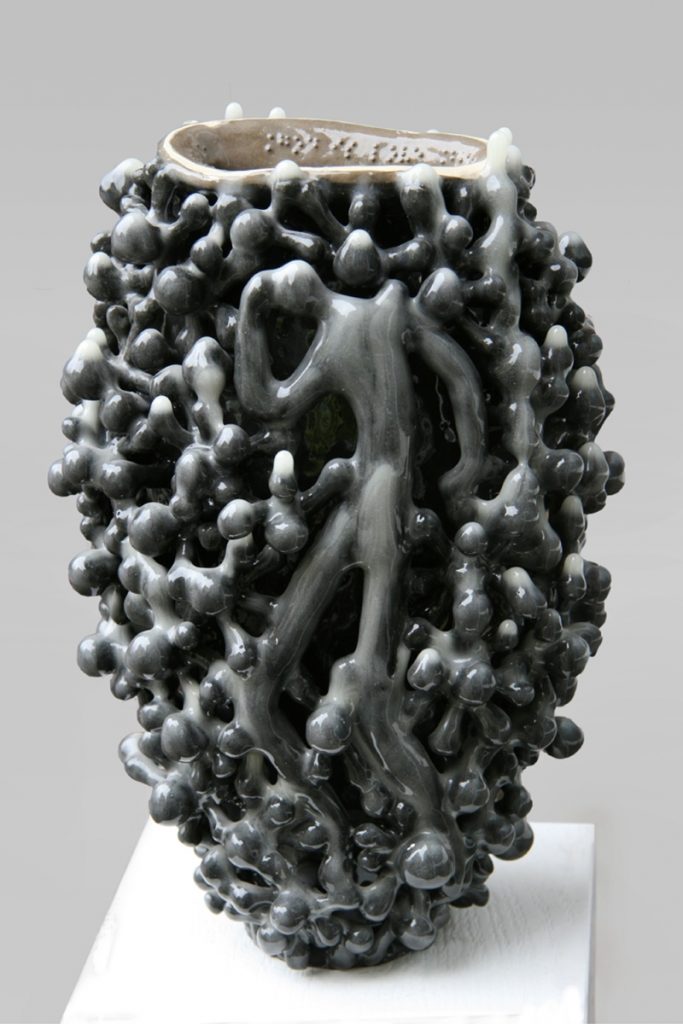
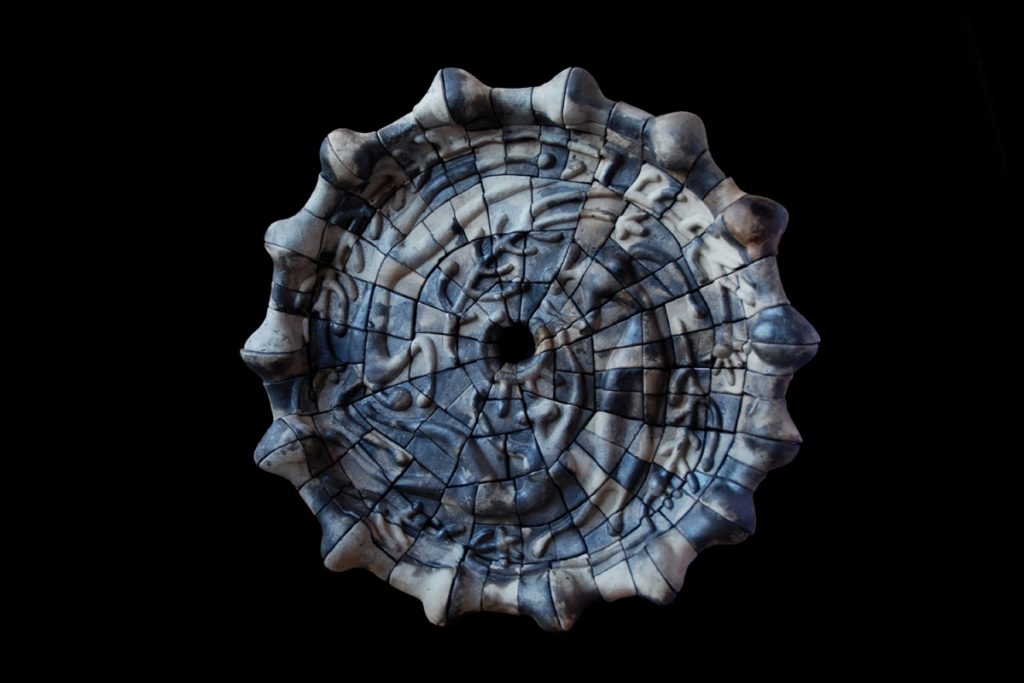
The “Composite Vessels” project is opposed to the monolithic vessel functional ceramics, very typical for Bulgaria.
It presents my observations of nature, where I find two main ways of building its forms: monolithic is the first, and composed of many different elements is the second. I make the works from different pieces of clay – similar to the leaves that form the crowns of trees. By pulling them out and gluing them together with a sprue, I create heterogeneous surfaces, like “volume masks”, interesting to examine tactilely.
On the other hand, in the “Composite Vessels” project, I use the peculiarities of the structuring of the panel to create a unique synthesis –functional vessels in an unconventional way, according to my idea of art. After I build the vessels I cut them into pieces to color and reassemble them. I grout them and embed images. I compose their shape from a variety of square and rectangular cores, also organized with clay strips. They can also be seen as walls. In this way, I integrate the ceramic tile and mosaic, which are widely used in exteriors and interiors but are not specific to pottery. The process of vessel construction continues after firing. By maintaining its functionality I overcome the limitation of molding and expand the possibilities for creativity. Again, I go beyond the tactile perception of art and am trying to reach another deeper level.
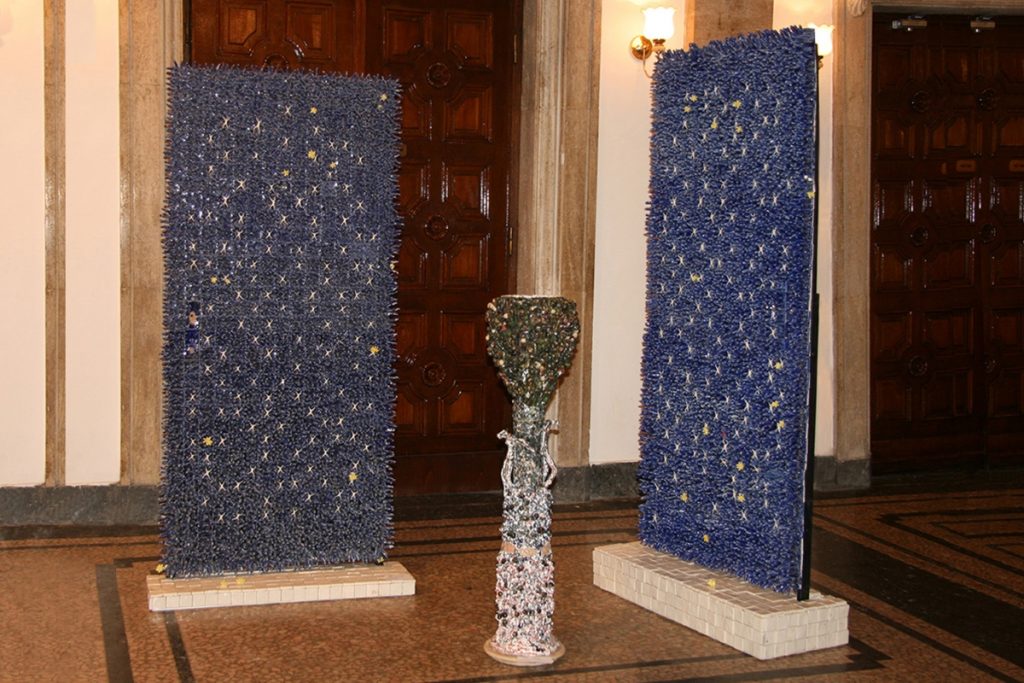
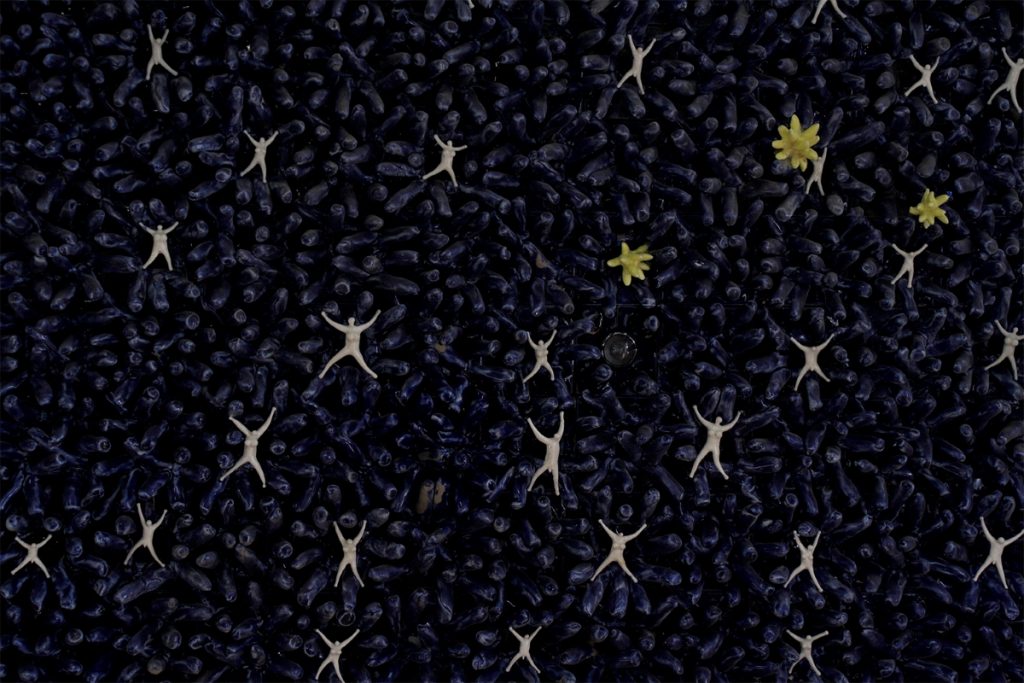
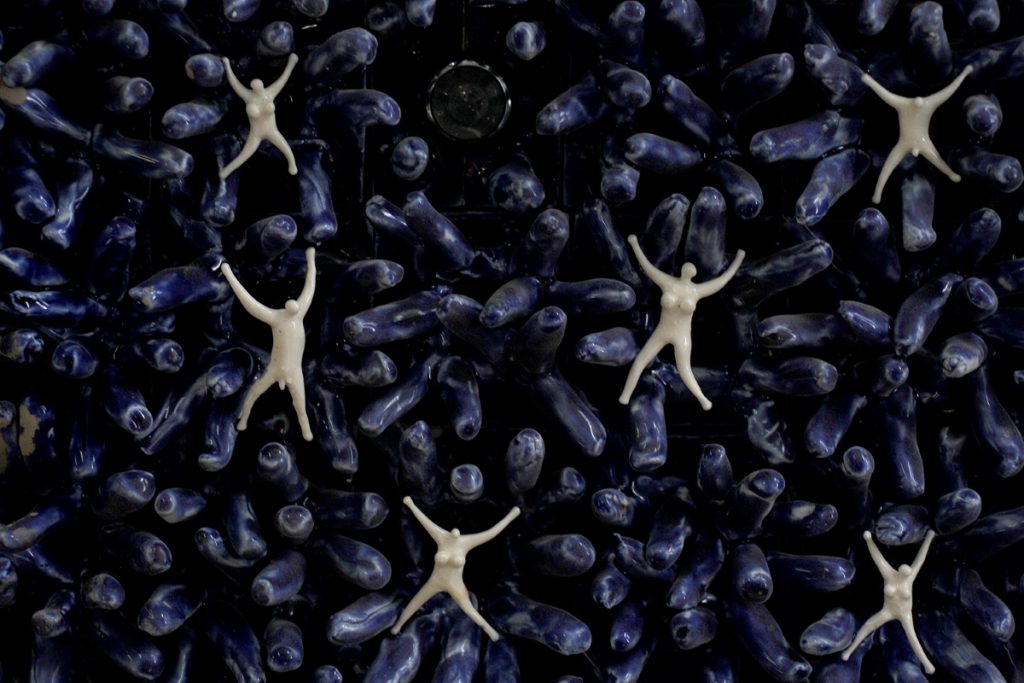
The “Heaven’s Gate” project is a large-scale spatial composition that creates associations for ancient times. It is a symbol of the real values in life and leads the observer beyond materialism and consumerism, beyond greed and vulgarity. For the modern man, this wide-open door offers the idea of passing through it, but only through enlightenment and freedom, humanism, and diligence. In the composition, the plant that stands in front of the heavenly door is the symbol of selfishness. On the two wings of the door are built small human figures of men and women who run in joy, which depicts the festive victory of love and good over egocentrism and evildoing. The color of the plastic is dark blue – like the endless night sky – on which stars twinkle like yellow flowers.
The “Heaven’s Gate” is not monolithic. The piece is constructed from a variety of appendages and small clay pieces, just like the grass forms the face of the field, or the leaves make up the crown of the tree, which has an irreplaceable positive effect on tactile inspection. The size of the door is intentionally out of hands’ reach. This violates the established criteria for tactile examination and creates in the blind viewer the impression of vastness and infinity. The figurines on the doors are simplified so that they can be better read by touch.
The project CERAMICS FOR THE SIGHTED AND THE BLIND, presented through “Harmony” and Project “Composite Vision” (Project “Composite Vessels” and Project “Heaven’s Gate”), is a synthesis between the visual culture of the sighted and the blind. It expands the tangible perception of ceramic art and achieves a fuller expression and perception in its truly unique universality. This is how another part of the audience joins in – the visually impaired.
Photo captions
- Court for Nothing 1, 2004, stoneware, 49x24x24 cm
- Pot, 2004, stoneware, glaze, 40×21.5×21.5 cm
- Court for Nothing 1 (detail), 2004, stoneware, 49x24x24 cm
- Court for Nothing 1 (detail), 2004, stoneware, 49x24x24 cm
- Court, 2003, stone, 60x18x18 cm
- Court (detail), 2003, stone, 60x18x18 cm
- Court, 2002, stoneware, 70x45x18 cm
- Court (detail), 2002, stoneware, 70x45x18 cm
- Candlestick-Vase 1, 2007, stoneware, 38×17.5×16.5 cm
- Marietta 1, 2011, stoneware, 23×16 cm
- Exhibition for the sighted and blind in Art-VIP Gallery, Ruse, Bulgaria, 2002
- Exhibition for the sighted and blind in Art-VIP Gallery, Ruse, Bulgaria, 2002
- Exhibition for the sighted and blind in Art-VIP Gallery, Ruse, Bulgaria, 2002
- Teapot, 2010, stoneware, glaze, 14x17x11 cm
- Trays, 2013, porcelain, stoneware, glaze, 86x200x15 cm
- Trays (detail), 2013, porcelain, stoneware, glaze, 86x200x15 cm
- Trays (detail), 2013, porcelain, stoneware, glaze, 86x200x15 cm
- Vase 7, 2012, stoneware, glaze, 45x20x20 cm
- Vase, 2014, stoneware, reduction, smoking, 23x16x16 cm
- Vase, 2013, red clay, reduction, smoking, 43x13x13 cm
- Vase (detail), 2013, red clay, reduction, smoking, 43x13x13 cm
- Court, 2016, red clay, reduction, smoking, 100x48x60 cm
- Vase, 2010, stoneware, glaze, 33x22x18 cm
- Plate, 2013, stoneware, reduction, smoking, 36x36x7 cm
- Installation Heaven’s Gate, 2012-2015, porcelain, glaze, 220x400x50 cm
- Installation Heaven’s Gate (detail), 2012-2015, porcelain, glaze, 220x400x50 cm
- Installation Heaven’s Gate (detail), 2012-2015, porcelain, glaze, 220x400x50 cm



